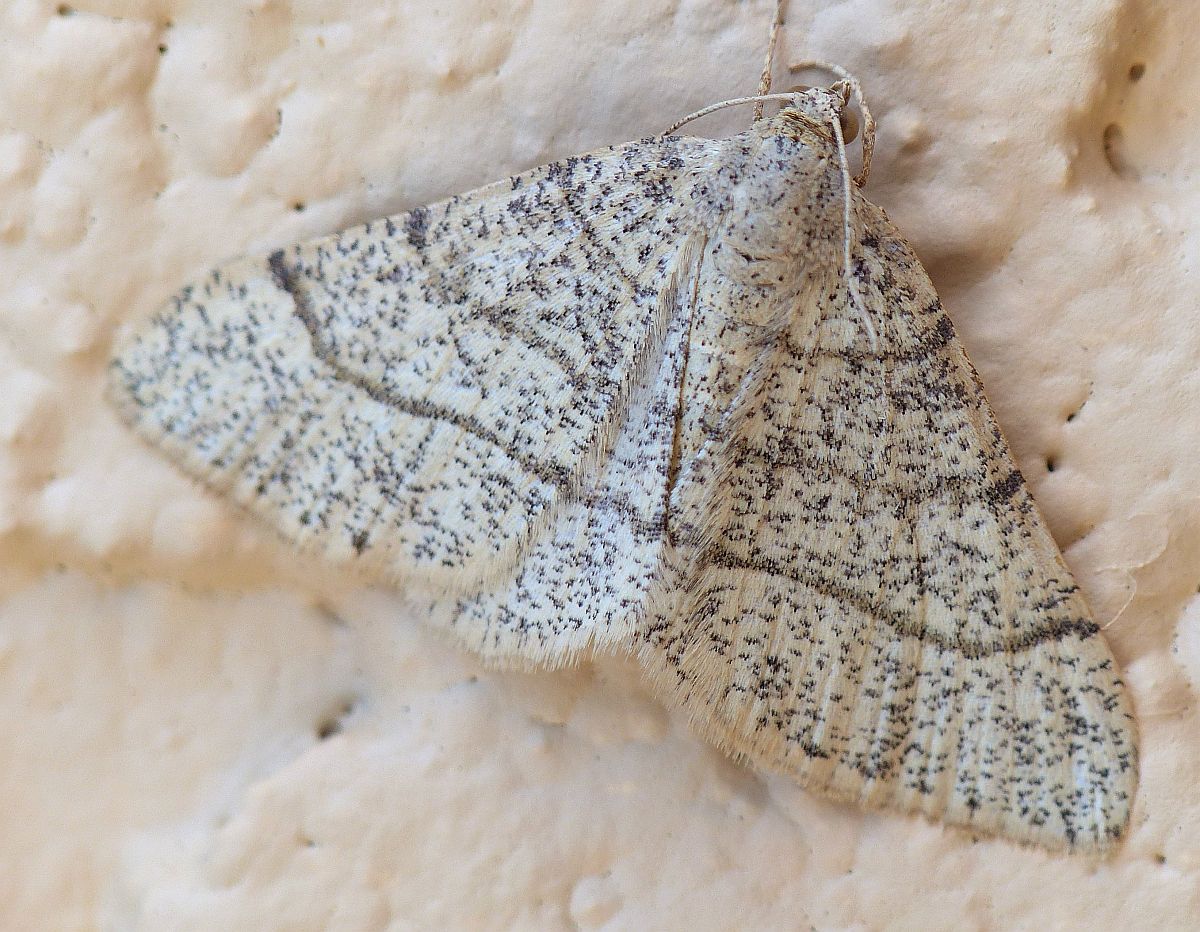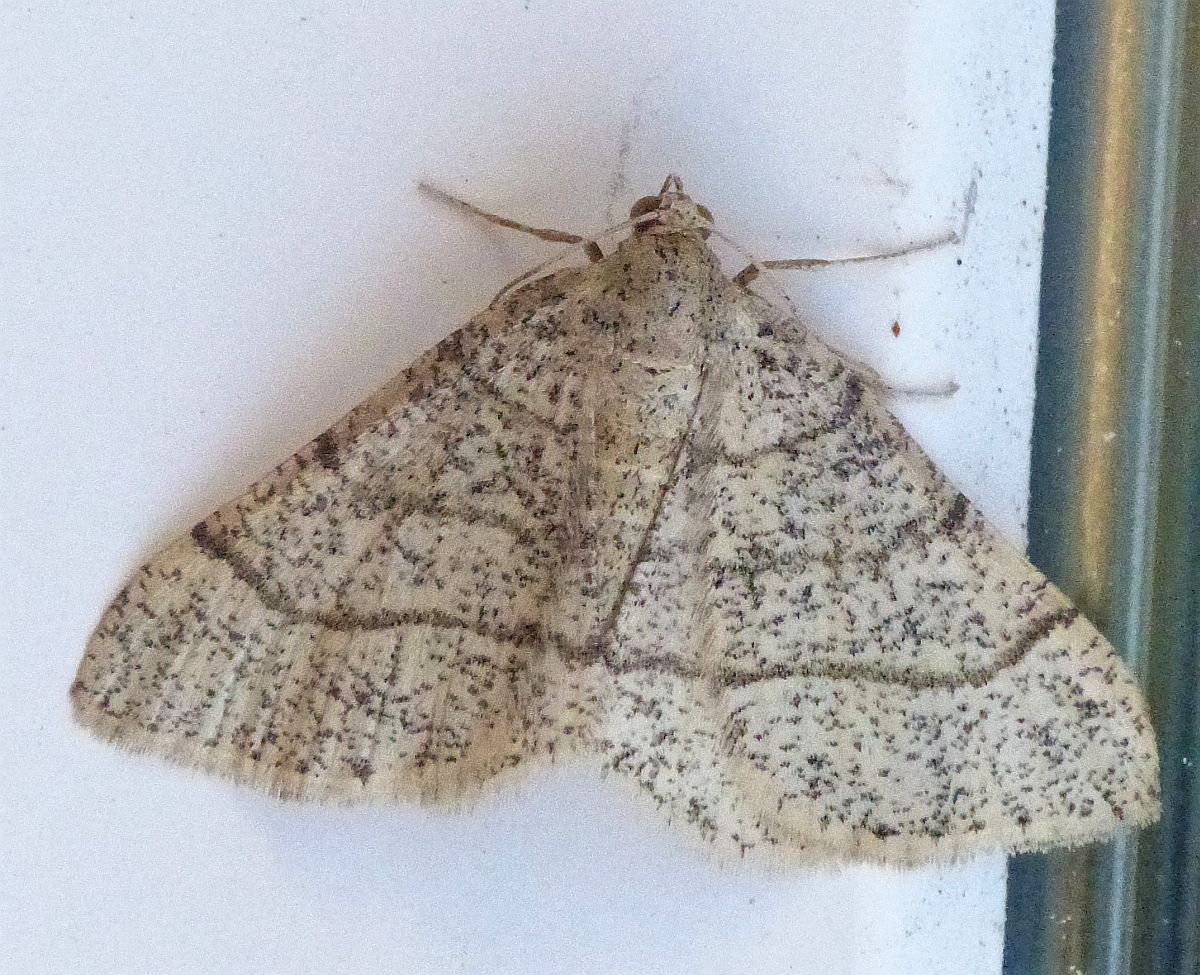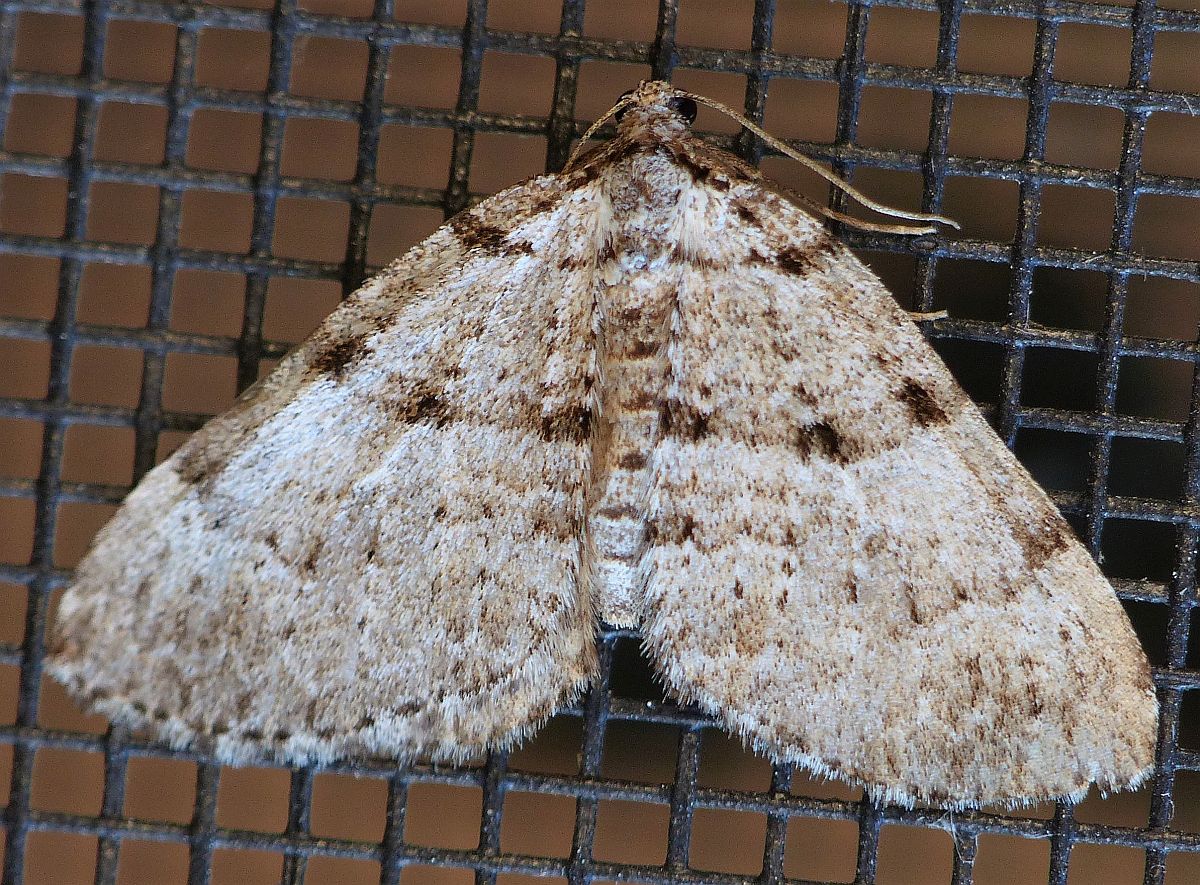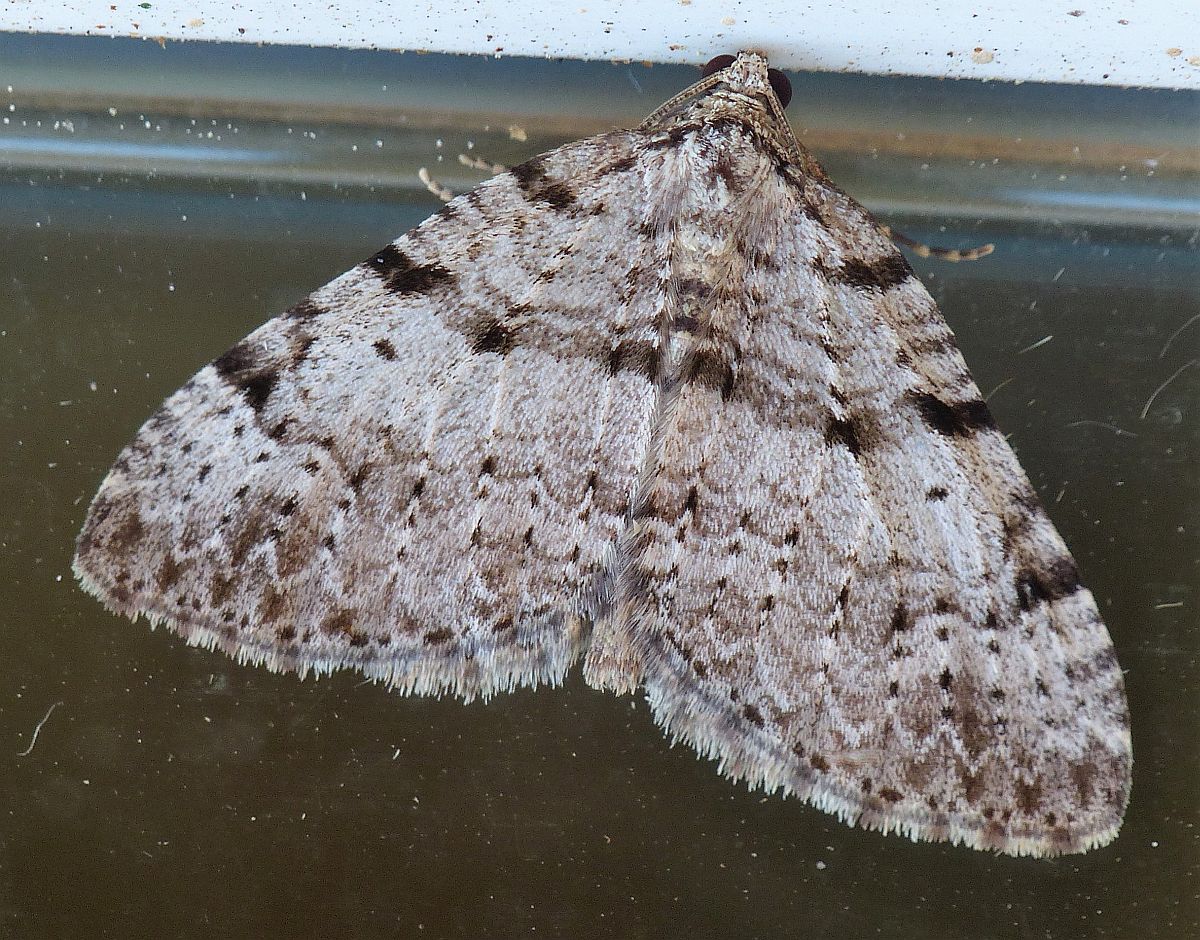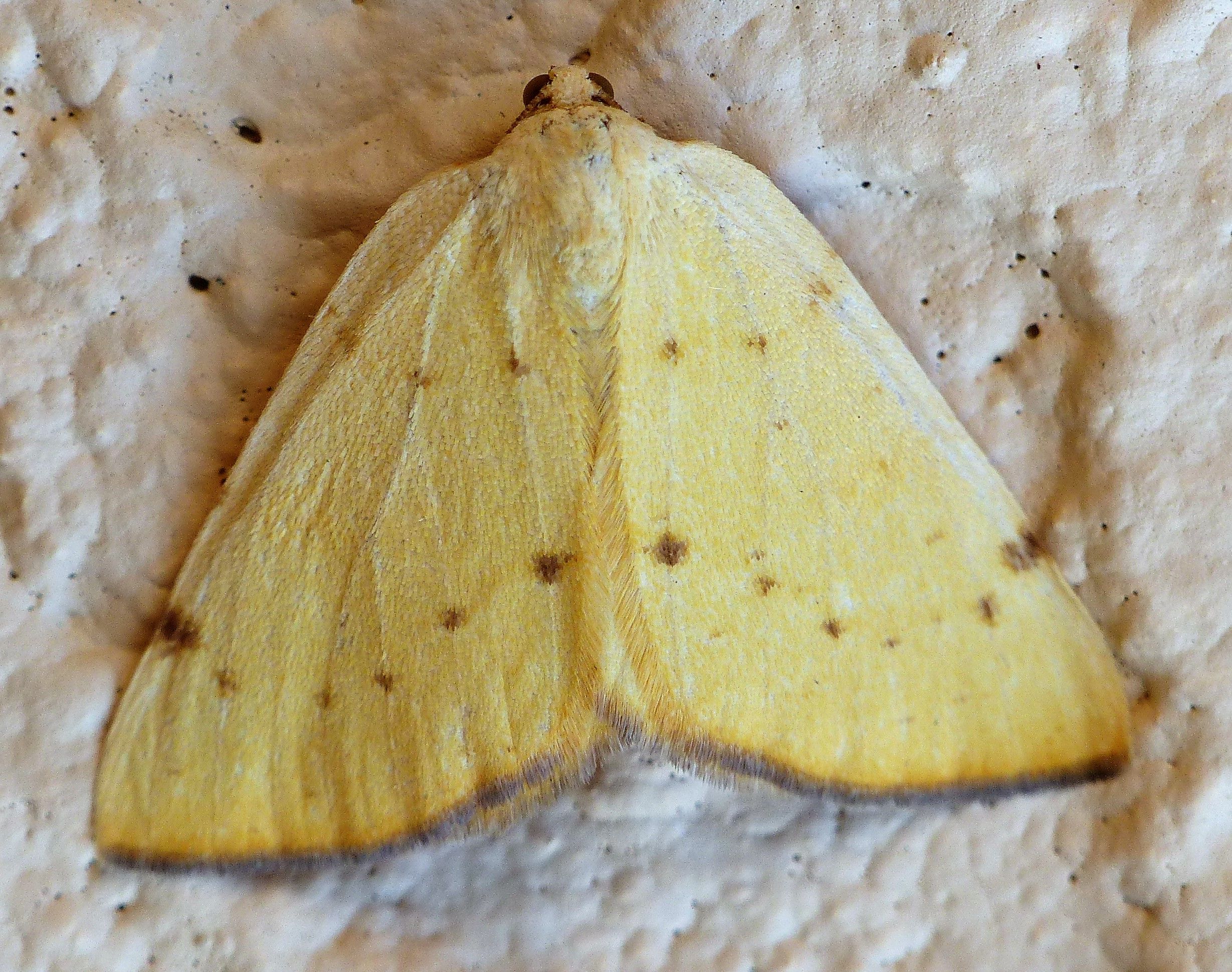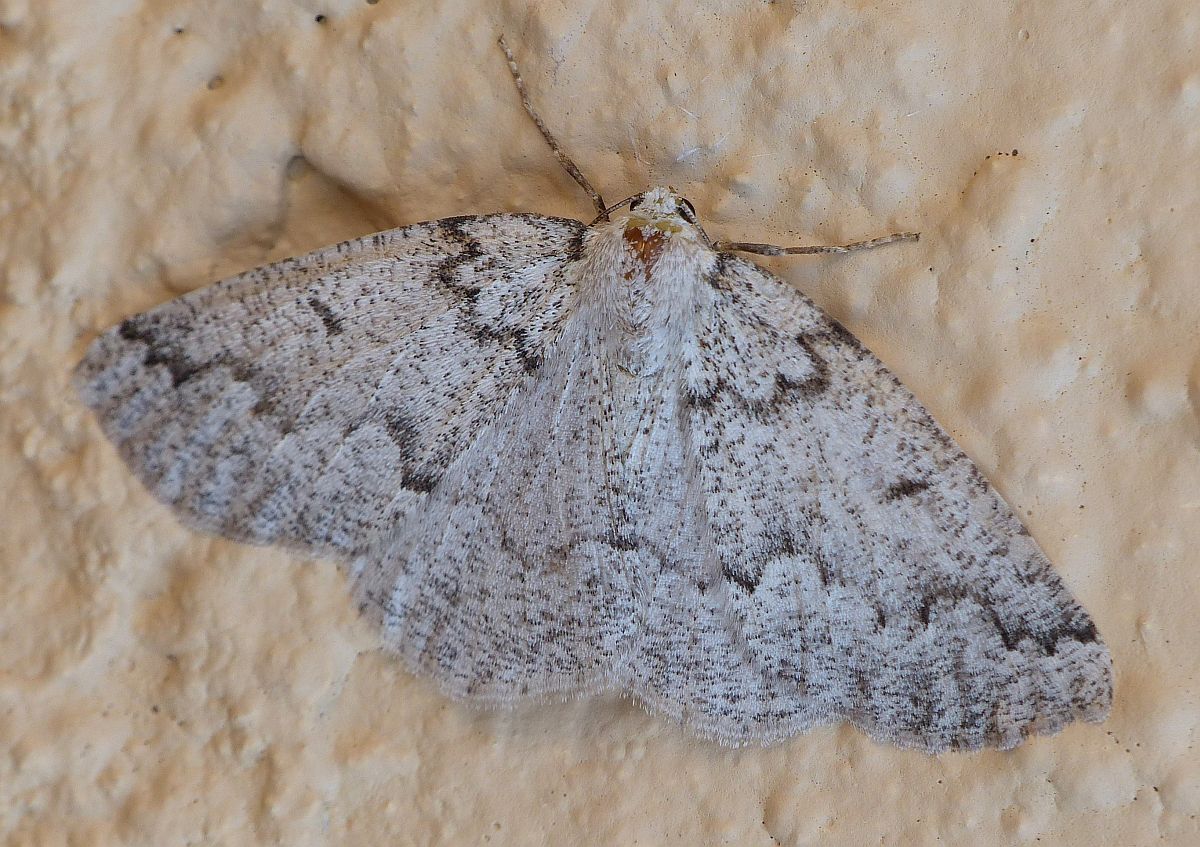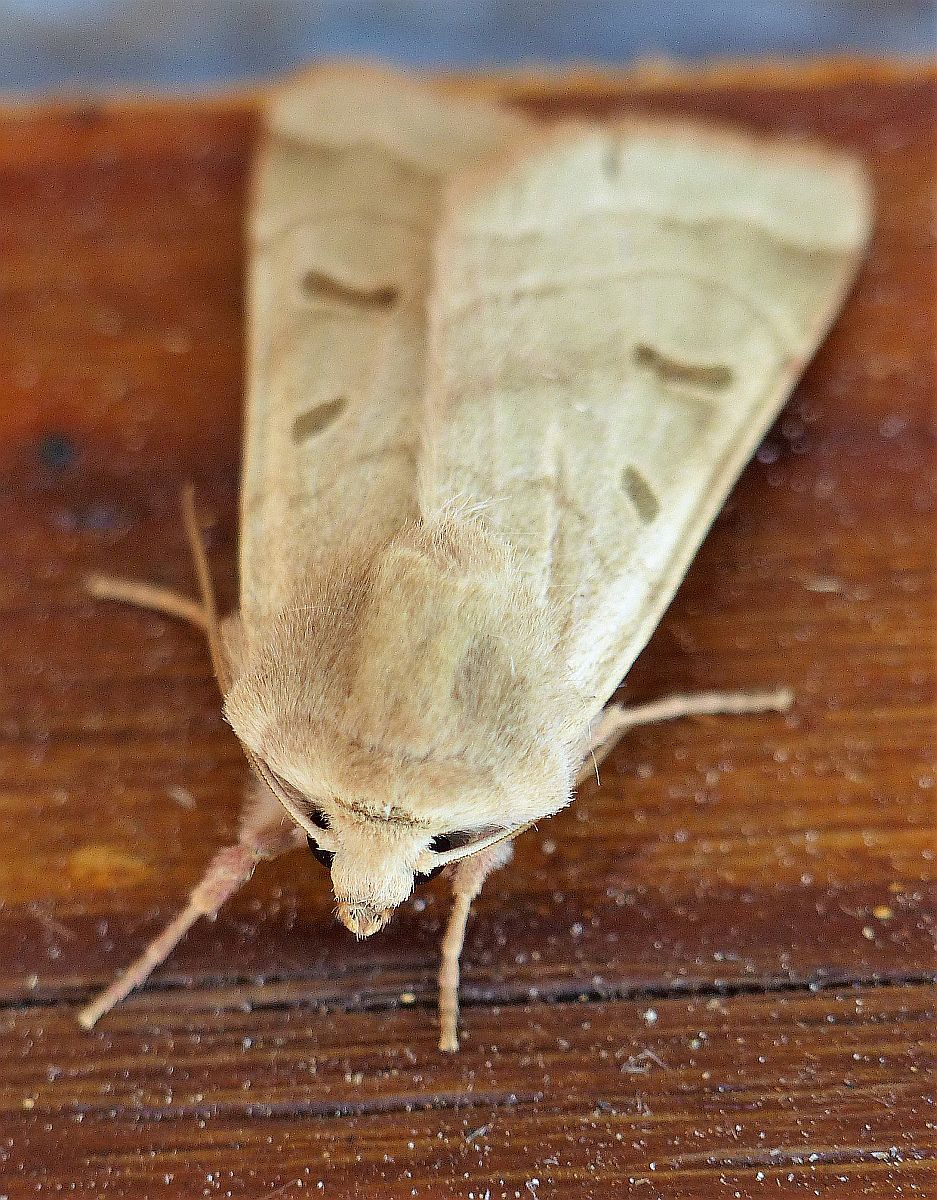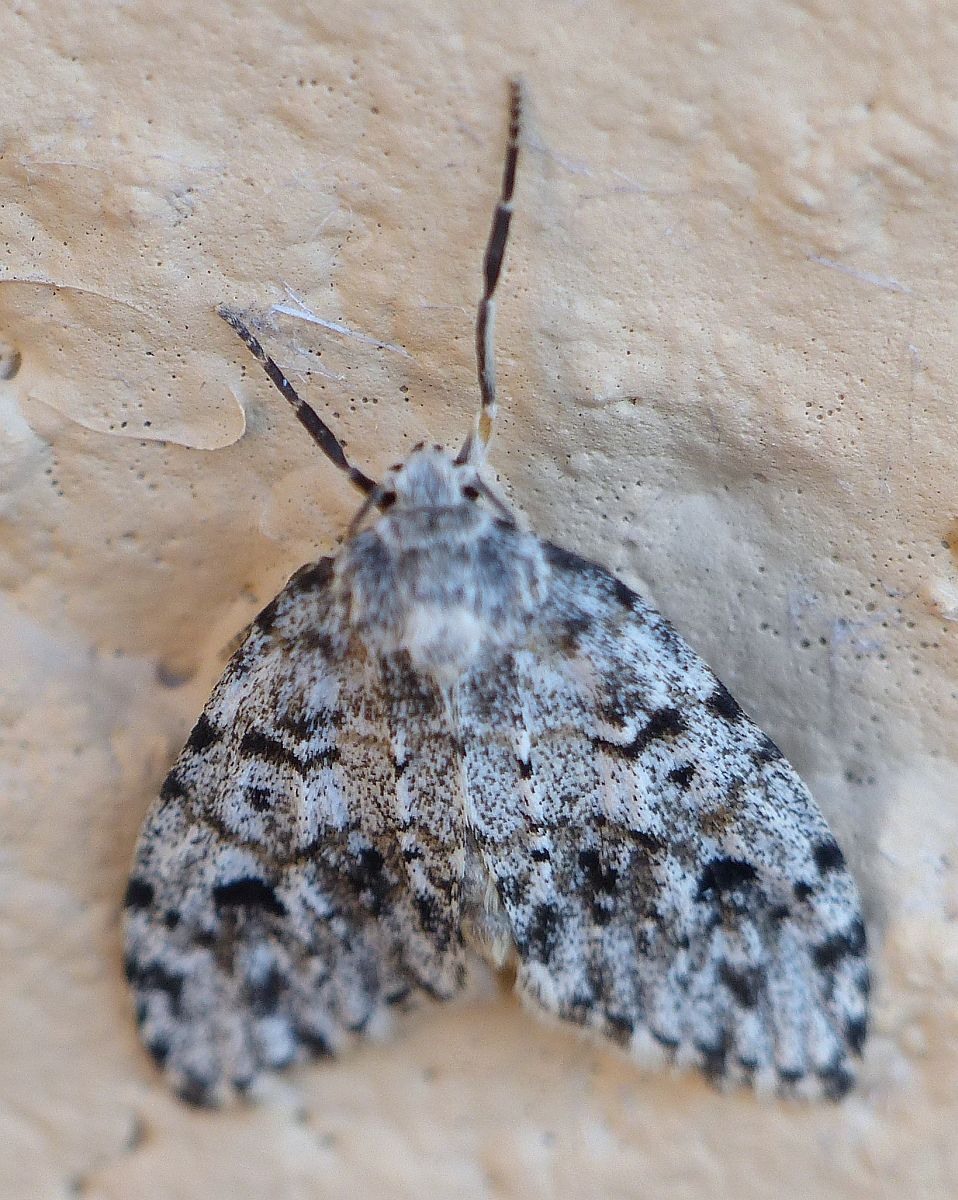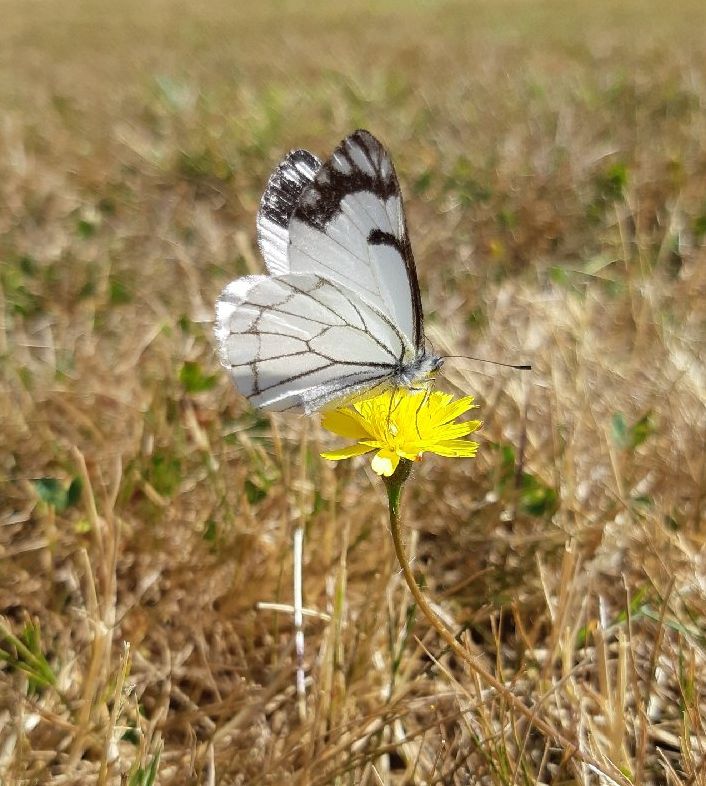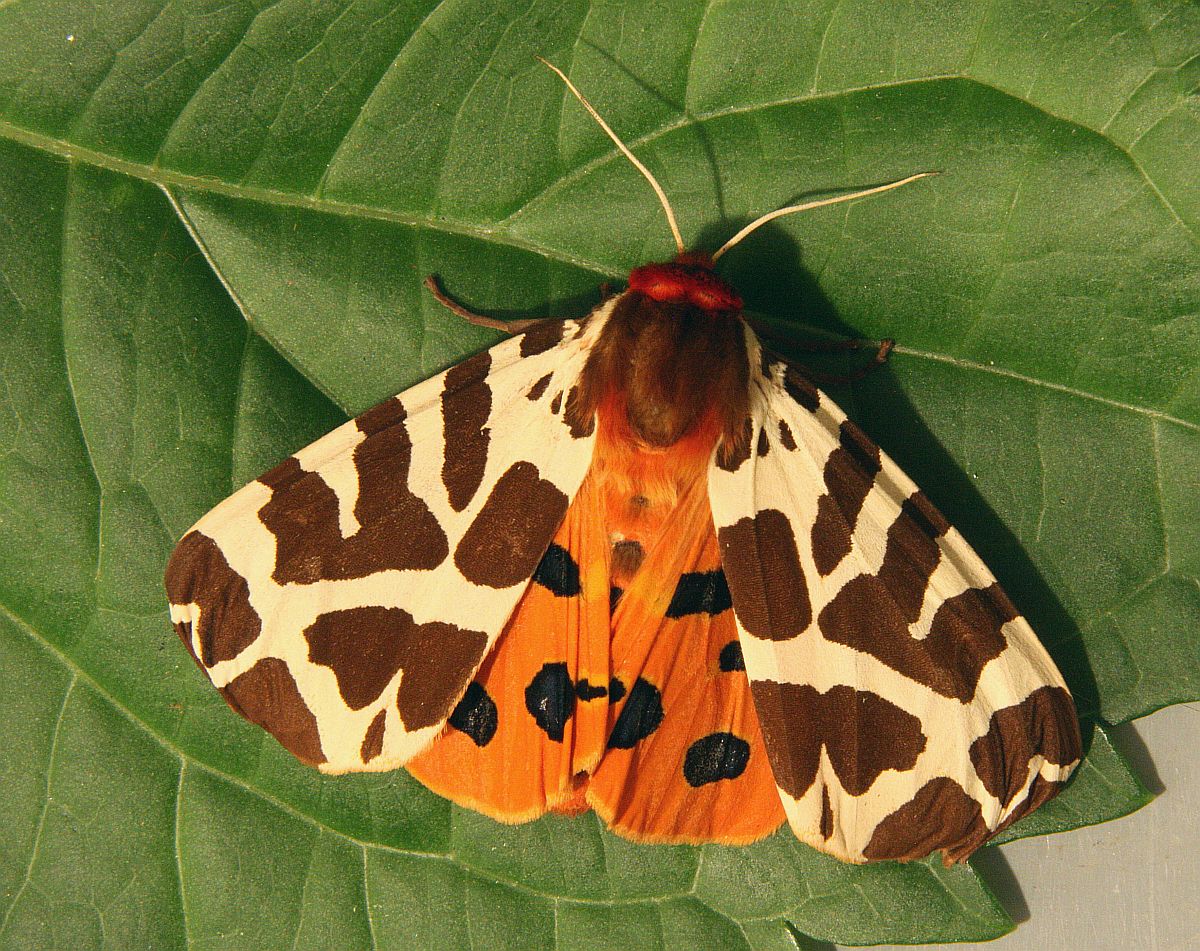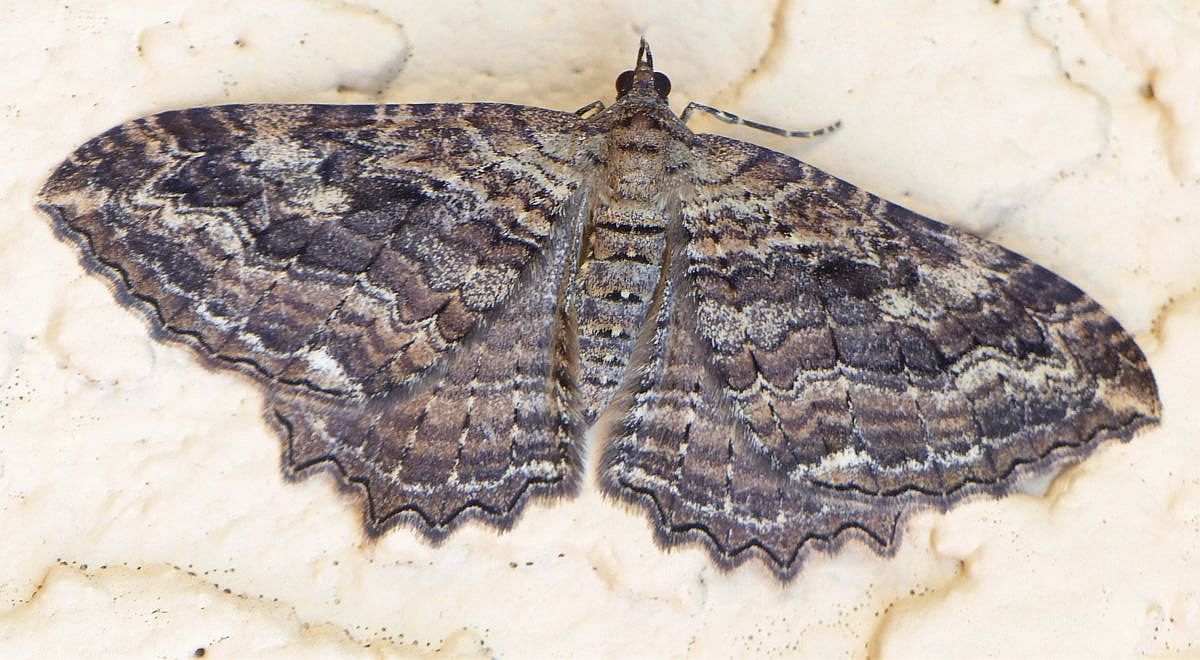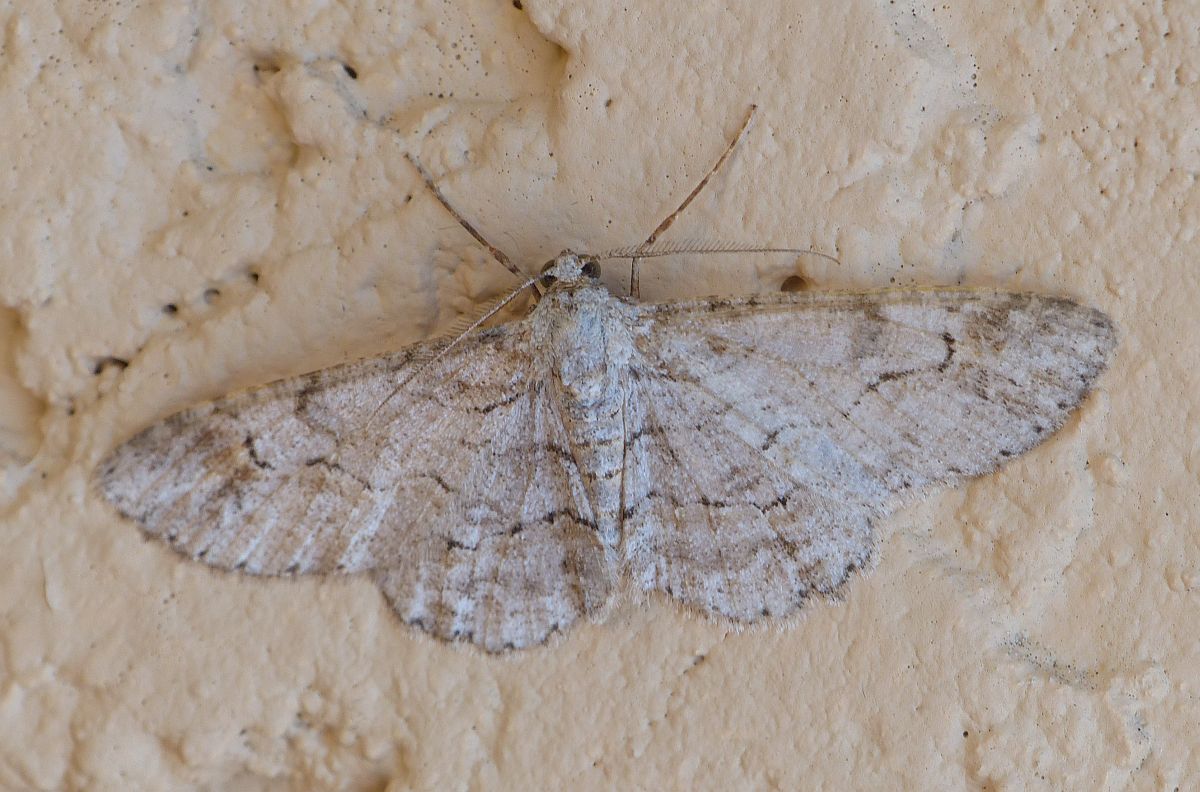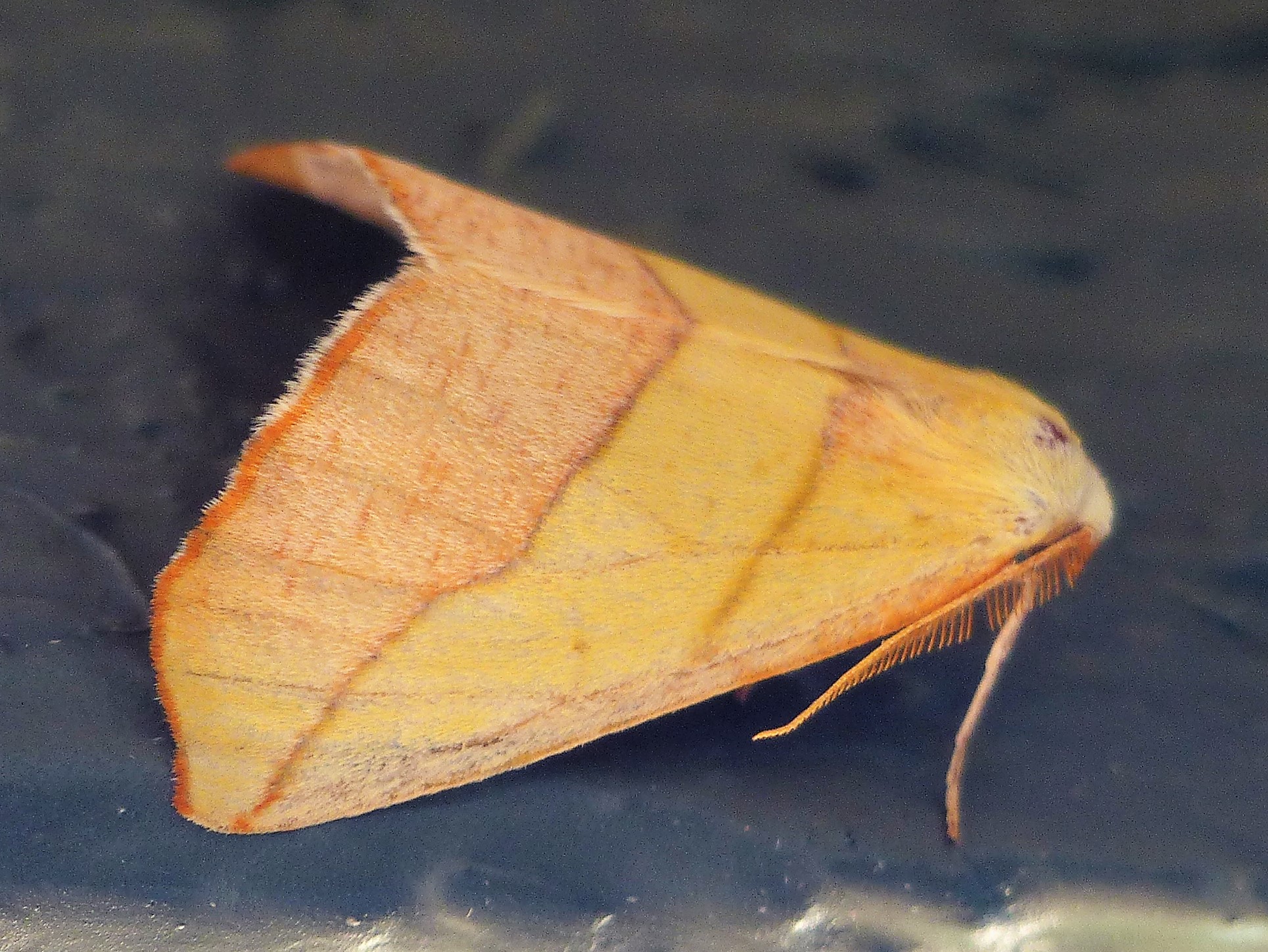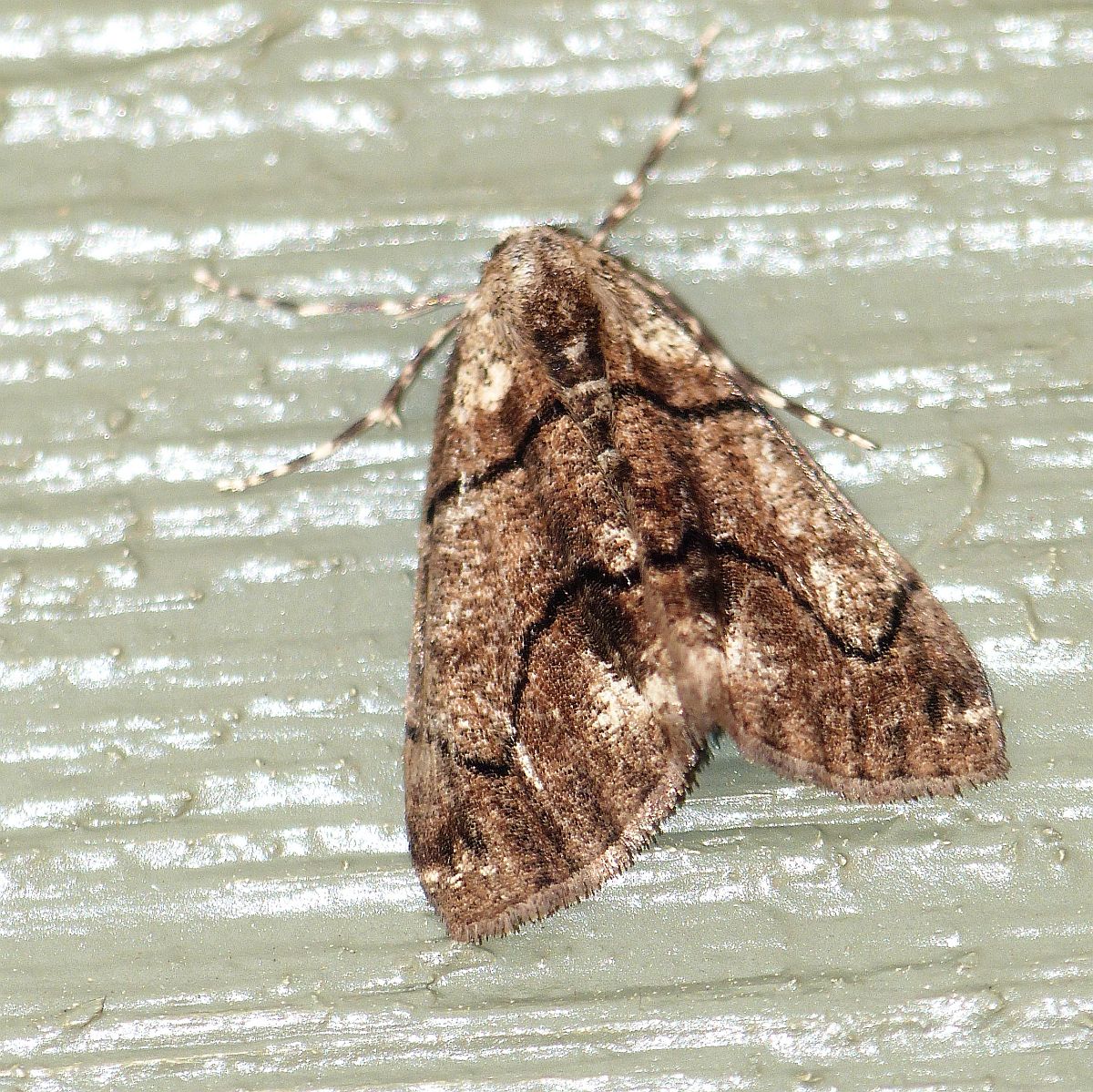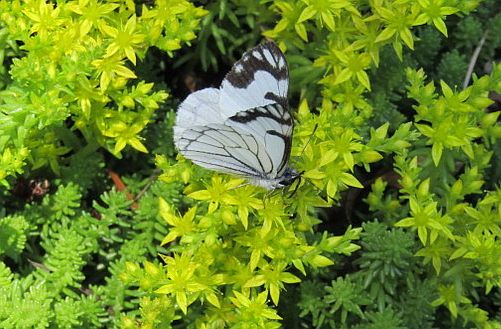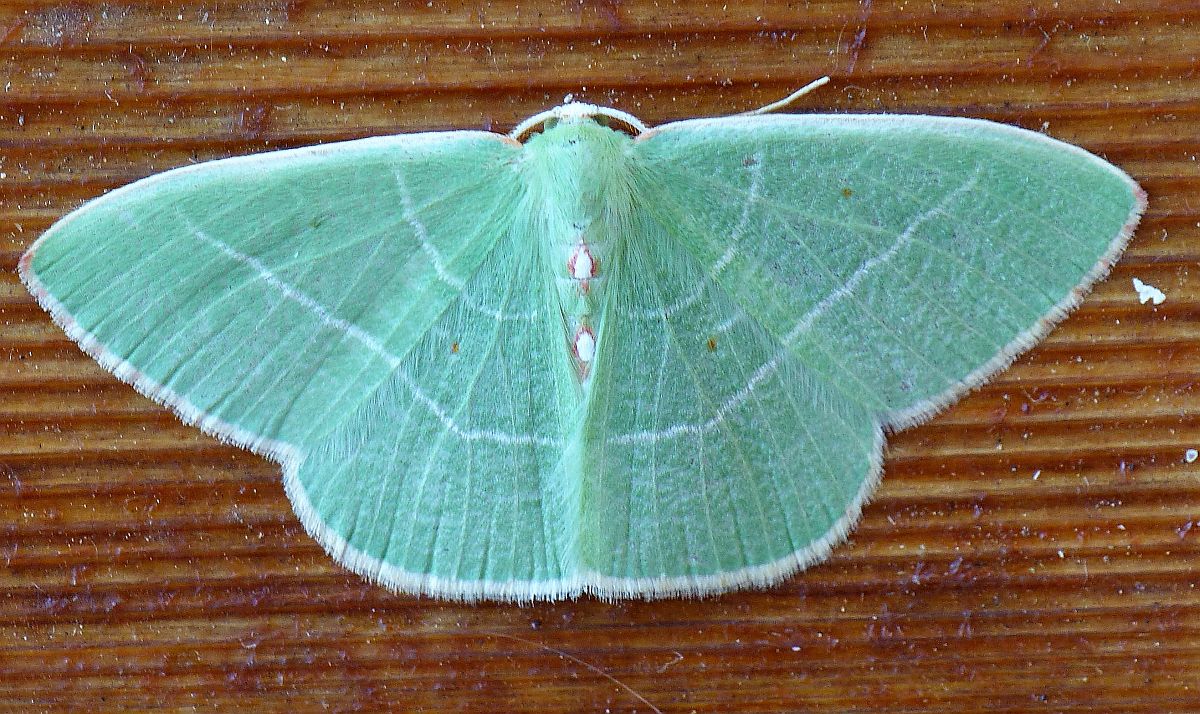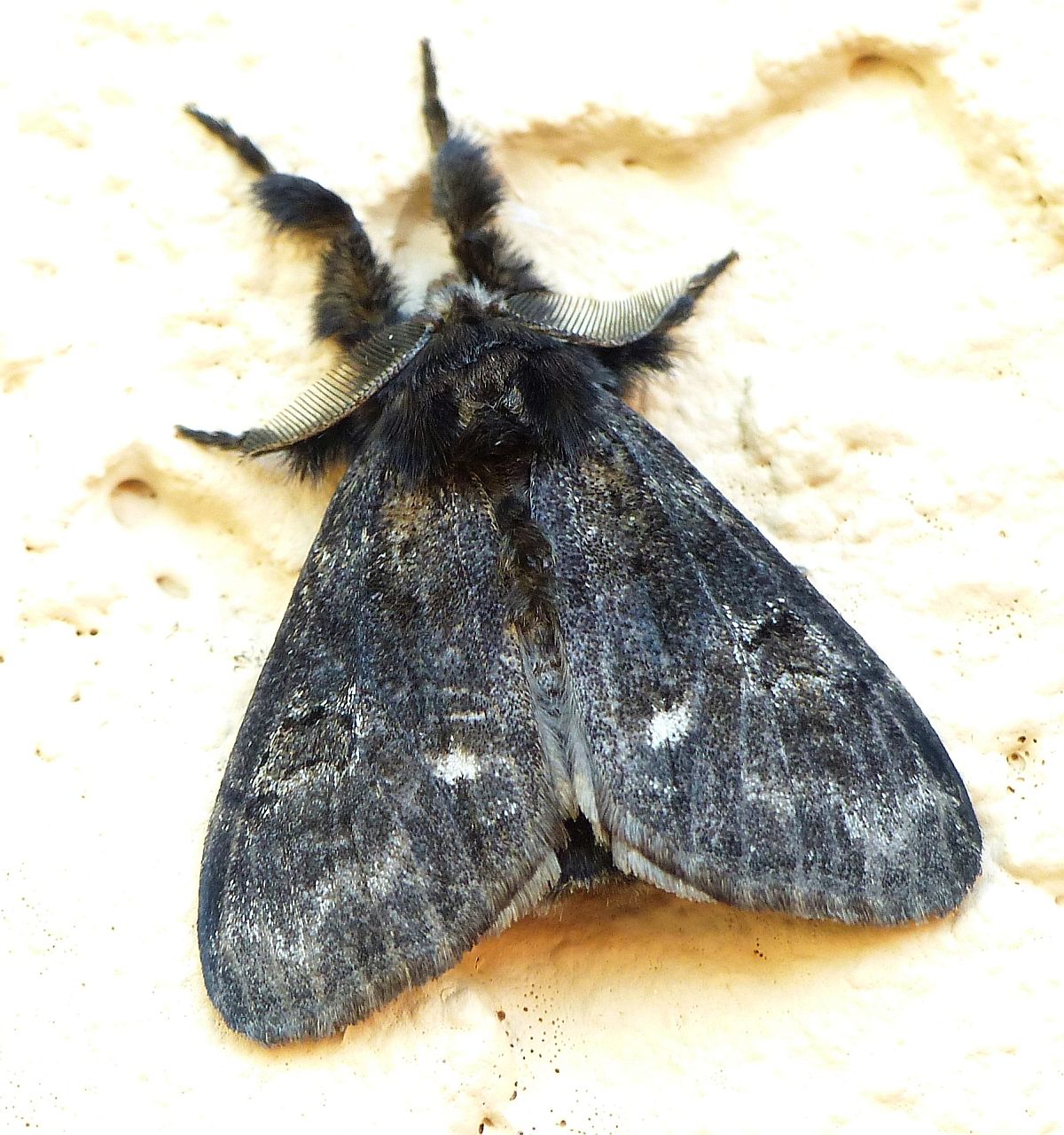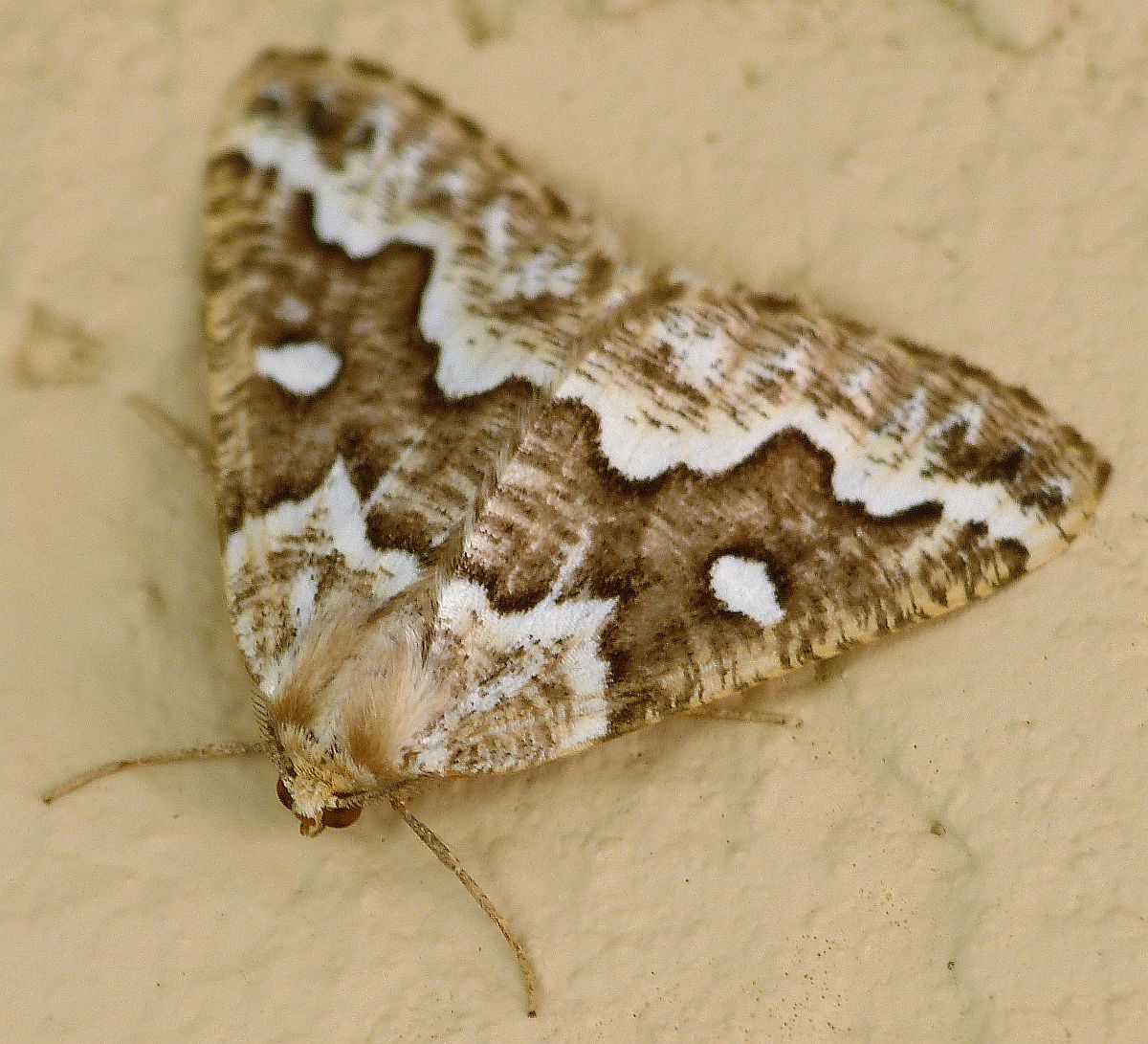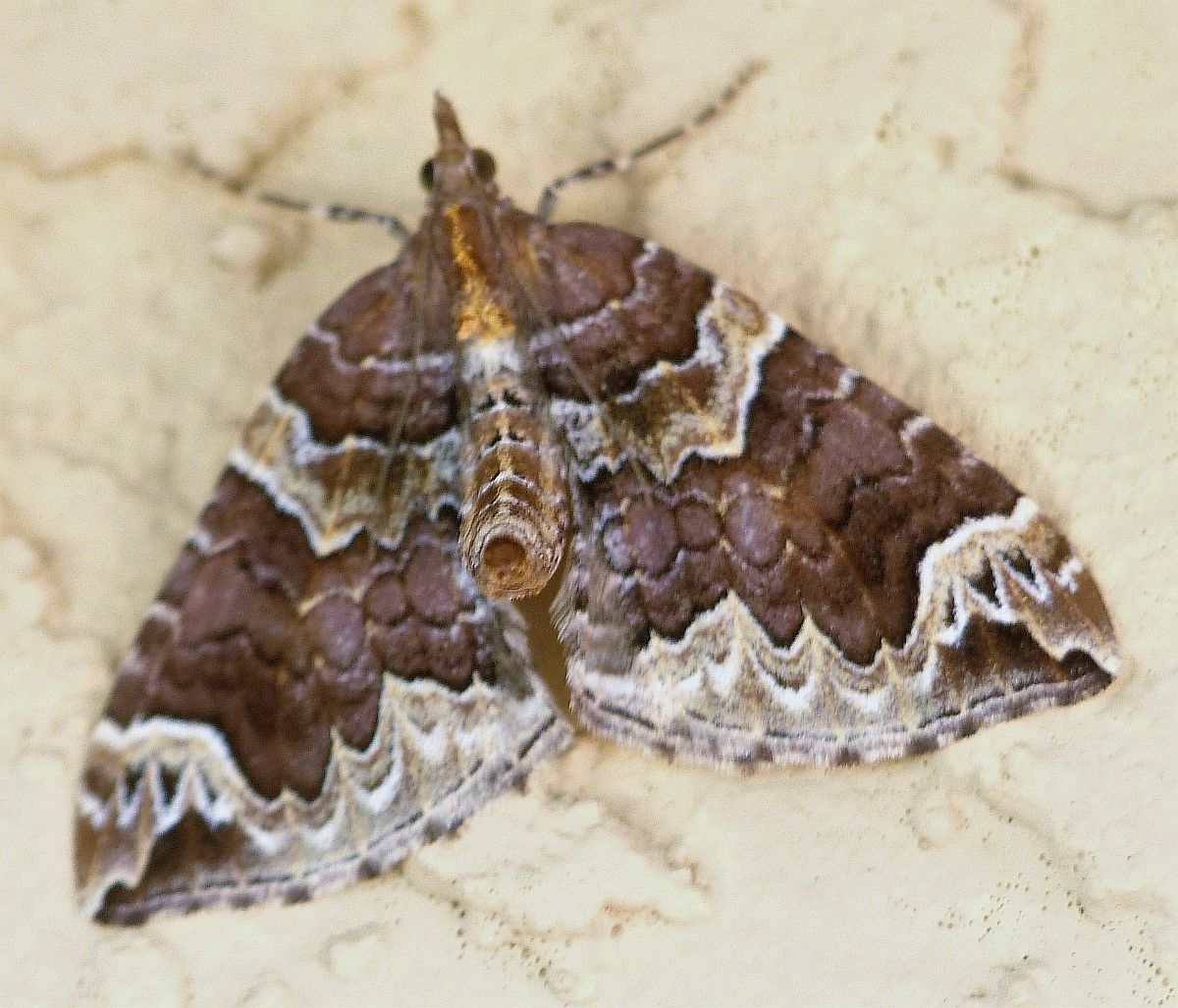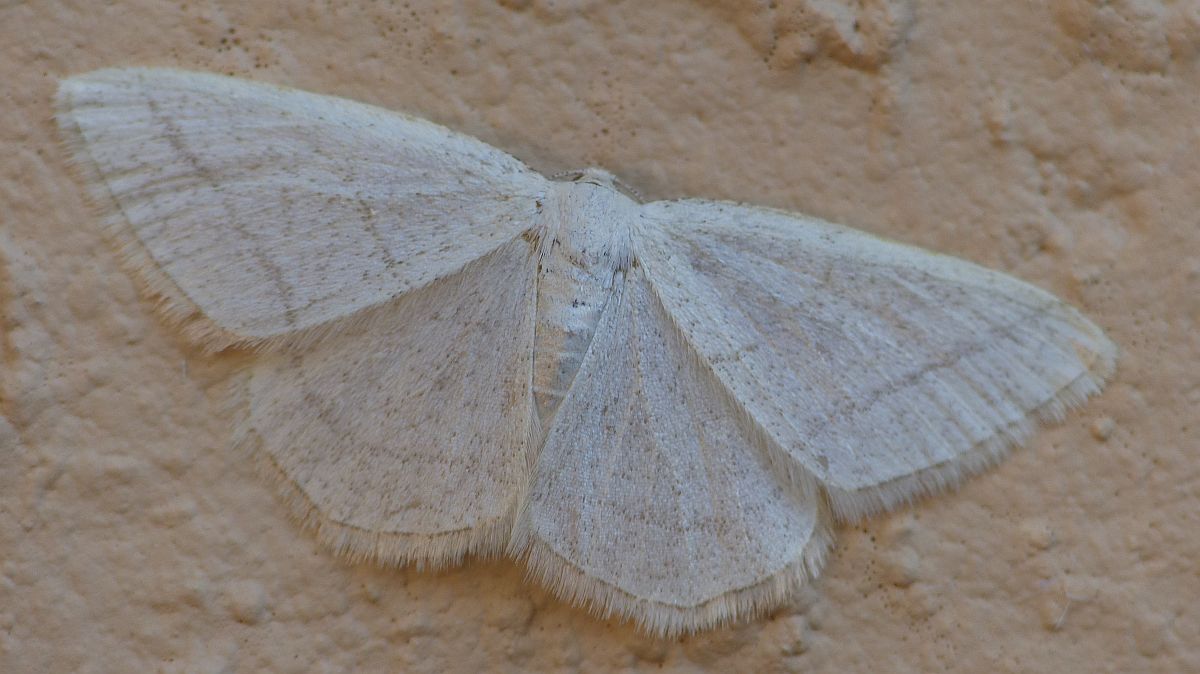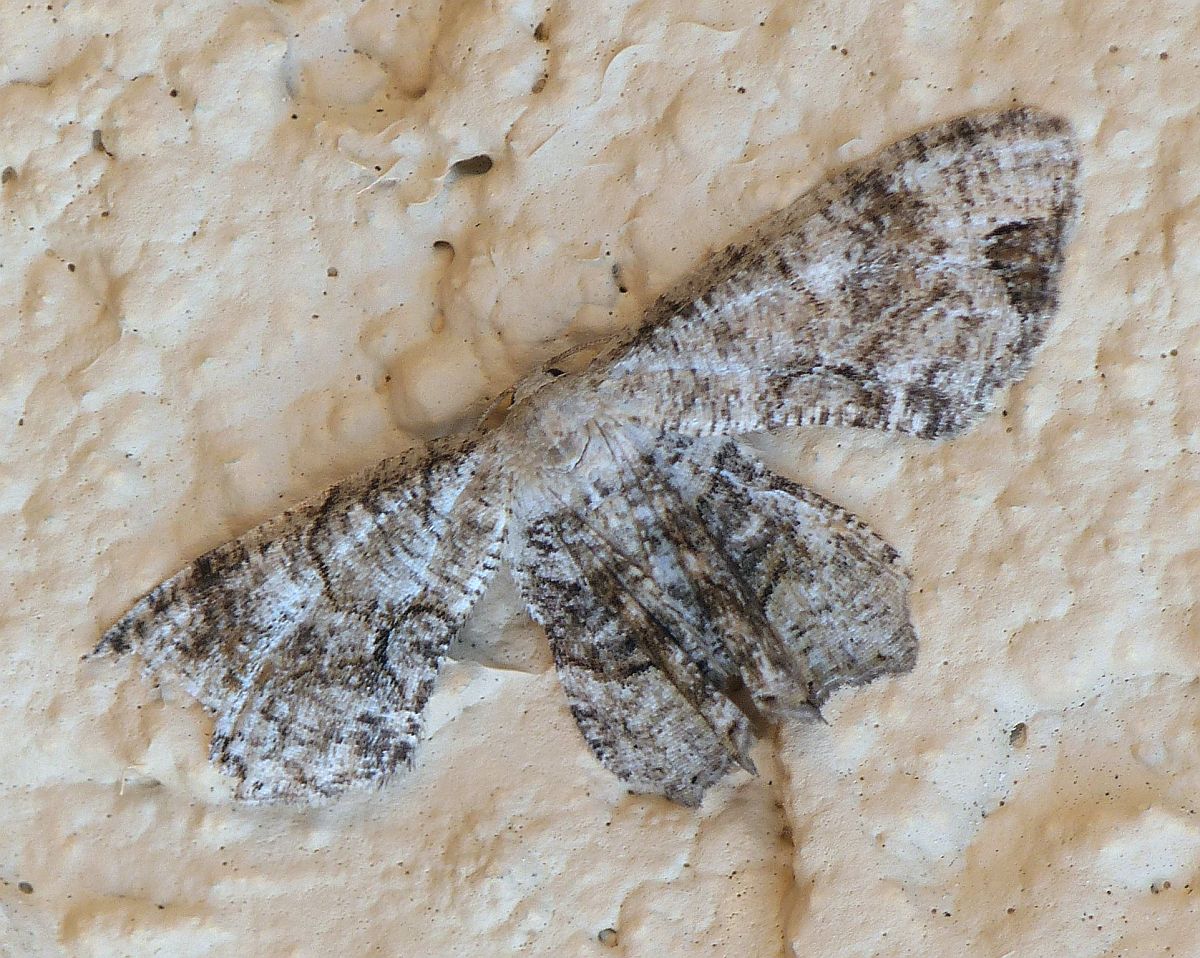July 18 morning
And now for something completely different. Rosemary Jorna writes: Here is another of this summer’s interesting insect actions. I believe this is a Giant Water Bug. It is over 5 cm. The grandchildren caught it in a net in the shallows on the Sooke River yesterday (July 17). When we released it it came to rest underwater on a rock, then next thing we saw was the crayfish head under the rock followed by the bug. A few seconds later the bug emerged, dragging out the crayfish, which soon stopped struggling. We watched in fascinated horror for five minutes or so.
Rosemary tells us that the Signal Crayfish Pacifastacus leniusculus, our only native crayfish, occurs in the Sooke River, so it is probable that that is what this one is. However, there are a few non-native crayfish in British Columbia, and we can’t be absolutely sure of this one. Rosemary speculates that it might have just finished a moult, which might account for its very light colour. The main claws showed red.
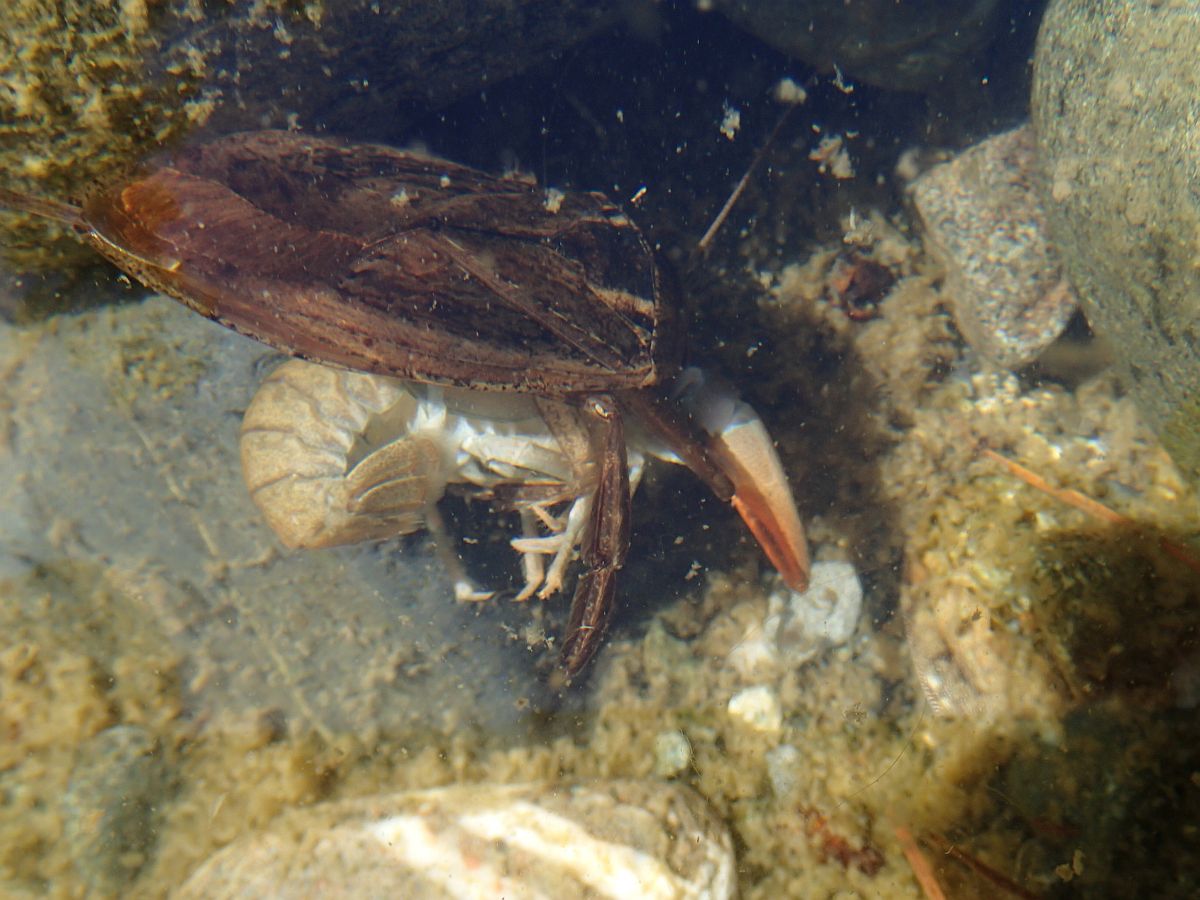
Giant Water Bug Lethocerus americanus (Hem.: Belostomatidae)
Crayfish, probably Pacifastacus leniusculus (Dec.: Astacidae)
Rosemary also sends a photograph of a beetle from Sooke River, kindly identified by Scott Gilmore as Xestoleptura crassipes.
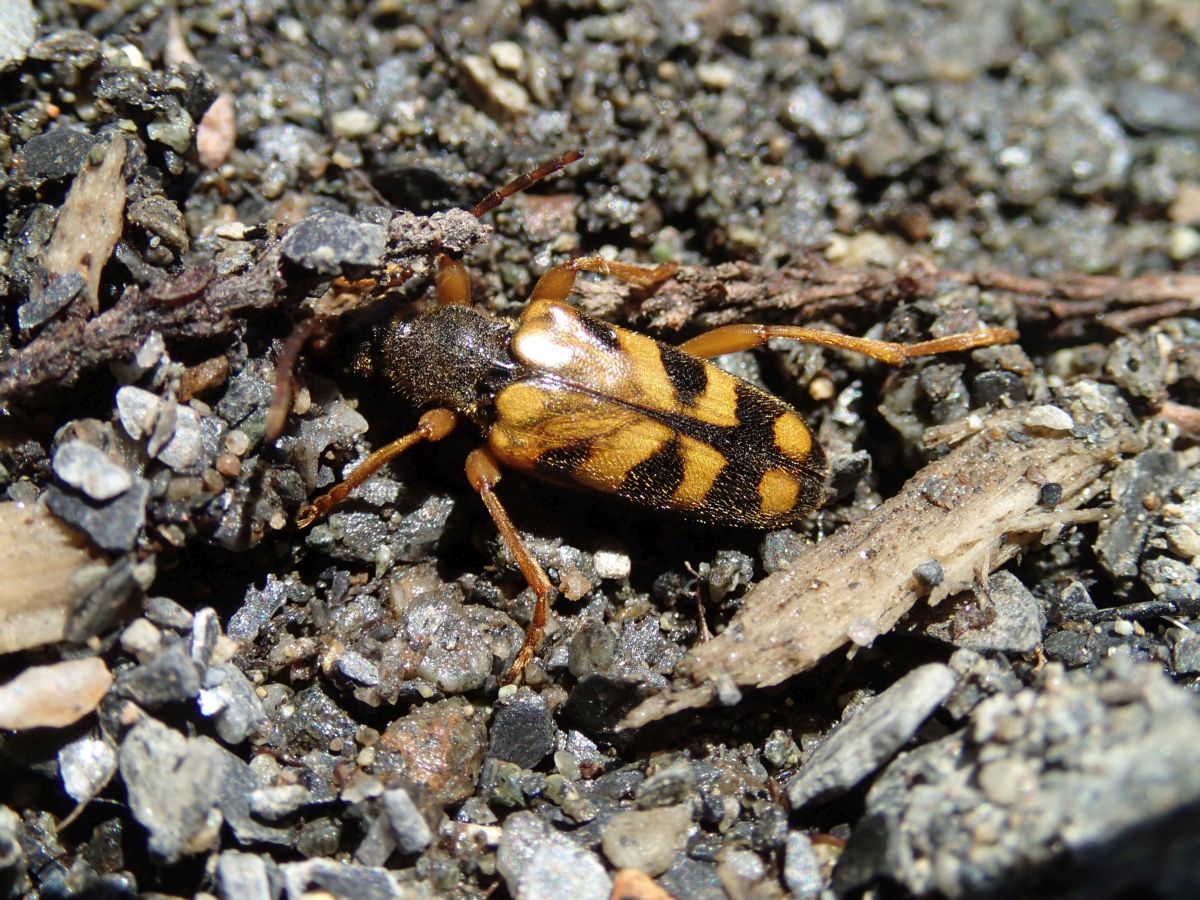
Xestoleptura crassipes (Col.: Cerambycidae) Rosemary Jorna
Jochen Möhr sends a photograph of the moth Iridopsis emasculata from Metchosin.
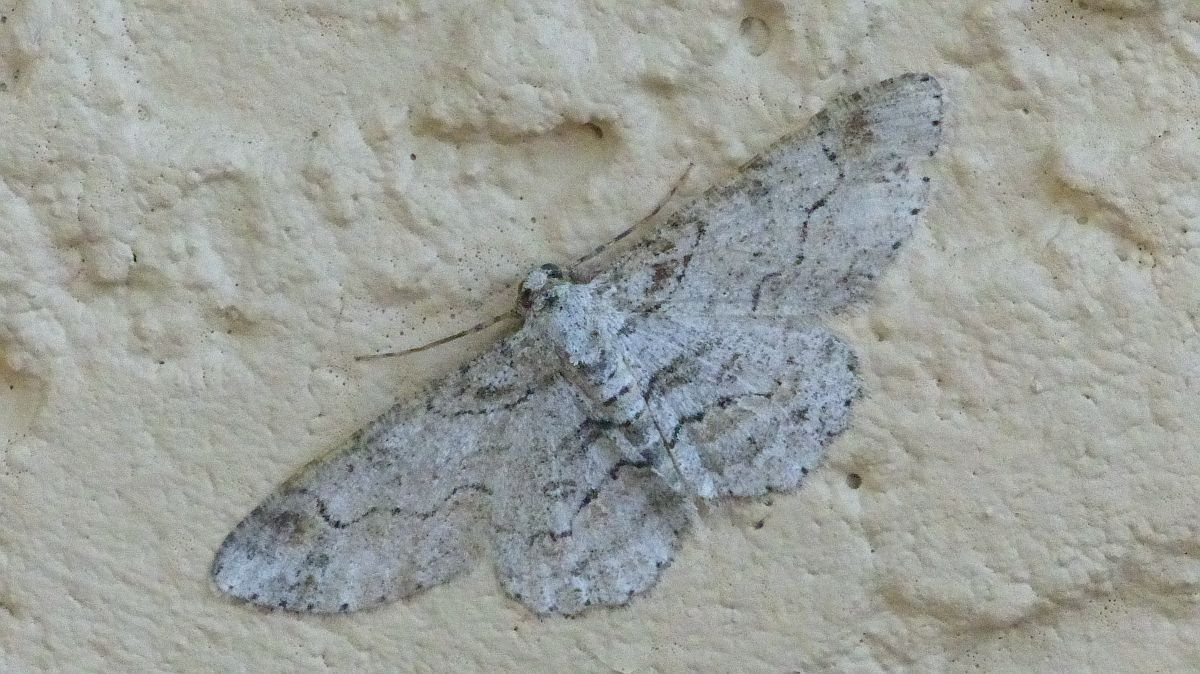
Iridopsis emasculata (Lep.: Geometridae) Jochen Möhr


